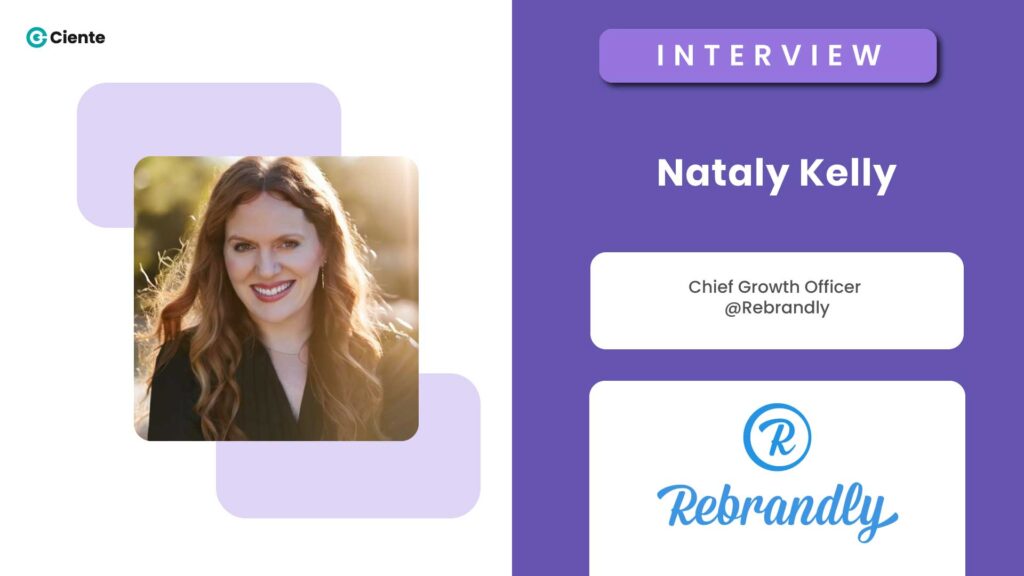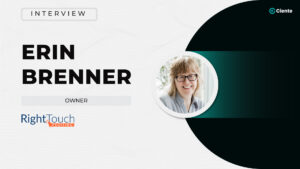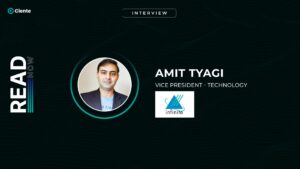1. Can you tell us more about yourself and your career trajectory?
Sure! I’m an Illinois native living in the Boston area, having recently moved back from Donegal, after living there for nearly two years during the pandemic to be near my husband’s family. I also lived in Ecuador for several years when I was younger, as a Fulbright scholar and a Master’s student. I’m a mom of two very spirited daughters with a pandemic puppy (now three years old!) who matches their energy levels.
My career began with AT&T. I worked remotely as a Spanish interpreter for a division of the company called Language Line, based in Monterey California. I was fortunate to be promoted there, publishing an internal newsletter, managing training programs, leading a team, and getting some incredible management training very early in my career. I even had the honor of being listed as a patent inventor for a certification program we developed. In that job, I learned the basics of people management. We had specific training on everything from performance management to conflict resolution, coaching, and more. It was an incredible foundation on which to build my career. I also met an amazing female VP there, Winnie Heh. An immigrant from China, she knocked my socks off and was an incredible role model for me. I aspired to be like her someday!
From there, I founded my own consulting business with a friend, and we were “acqui-hired” by NetworkOmni, a competitor of Language Line at the time. In that role, I was in charge of product development and bringing new products to market. Many of those products involved building key partnerships with other companies. It was a great experience, where I learned how to manage a product development process from end to end, from concept to launch and beyond.
Later, I went to work as an analyst at CSA Research, a market research and consulting firm, where I was promoted to Chief Research Officer. In my job there, I was very fortunate to learn a lot about how to size the market of a given industry, how to do consulting projects with Fortune 500 companies, and more. I met many SaaS companies along the way, and was fascinated by that entire business model.
I then took a VP role at Smartling, a B2B SaaS company, where I first built a partner channel for the business. I loved having direct revenue impact, and found it incredibly rewarding to know that I was impacting the top-line revenue growth. Our Chief Revenue Officer eventually promoted me to VP of Marketing, where I ran our marketing and BDR teams. There, I also learned a ton about marketing, especially SEO and inbound marketing, which quickly became passions of mine.
In fact, inbound marketing was how I learned about HubSpot! I met with a VP of Marketing there, who introduced me to the CMO. HubSpot was irresistible. They had such a strong employer brand, with a quirky angle to it that I just loved. Even though I hadn’t been looking for a job, they needed someone with my skills at the time, especially my experience with international growth and localization. I started there originally as a VP of Marketing reporting into the CMO, where I ran the Latin America marketing team while building a localization system that would enable the company to do inbound marketing in the rest of the world.
I was at HubSpot for nearly 8 years, and during that time, was promoted to VP of International Ops and Strategy, which was a very fun job for me. I ran our executive steering group focused on our international business, while building a repeatable office launch playbook. I led a cross-functional team that launched our offices in Tokyo, Berlin, Bogota, and Paris. I often joked that those offices were my “babies,” because I worked very hard to ensure we could get them set up for long-term success. It was such a pleasure to see them grow over time, knowing I was involved in planting those seeds.
In the later part of my time at HubSpot, I moved into a VP of Localization role to more squarely focus on adapting the customer experience for different markets, reporting to our Chief Sales Officer, Christian Kinnear. There, I had more direct exposure to the sales function, and absorbed a ton of knowledge related to B2B SaaS sales within a hybrid model of product-led and sales-led growth. I was lucky to be overseeing a globally distributed team, with people in many countries focused on localization. Meanwhile, I was also learning how to run a sales team at scale, a highly unique and special opportunity to learn. While I loved my various jobs at HubSpot over the years, I also made it clear that I wanted to have a more direct impact on revenue than I could through localization alone.
2. You recently announced your new role as Chief Growth Officer at Rebrandly. Can you tell us more about the company and your role there?
Rebrandly is on a mission to rid the world of spammy, generic links. We have tens of thousands of paying customers, 2 million users, and 90,000 developers using our APIs. But we’re only really just getting started! Our platform enables full-spectrum link management and enables businesses to shorten, brand, redirect, edit, and manage their URLs at scale.
My eyes were opened to the power of Rebrandly when I saw studies revealing that branded links have click-through rates that are 40% higher when compared to generic links. It should not be a surprise really, since no one wants to click on a long, generic, unbranded link. Every marketer on the planet needs to be using branded links, in my opinion, because it’s a simple but highly effective way to provide uplift to their overall marketing efforts!
Link management is a topic I didn’t know much about until I started learning about Rebrandly, but once I understood the value, I became enthralled. Links are hugely important, because they literally connect customers to brands. Links are what the very arteries of the internet, and yet at many businesses, they are neglected and go unmanaged. They are brand assets, but ones that are often misappropriated by bad actors and misused, causing significant damage to a brand and reducing brand trust.
In the age of cybersecurity and data privacy, it has never been more important for companies to take control of their links. As the market leader in link management, and the only SOC2-Type II certified provider in the market, Rebrandly takes security and data privacy very seriously. Our company is leading the market into a new age, where more and more people will join our call to arms, to abolish spammy, generic links forever, opting to use more trusted, branded links, like the ones they can access via our platform, instead.
As the Chief Growth Officer at Rebrandly, I oversee sales, marketing, product, and partnerships. It’s a phenomenal opportunity for me, because I love having direct responsibility for driving revenue. I’m a very numbers-oriented person, and having a top-line ARR target to hit every month, through a combination of product-led and sales-led motions, is fun and exciting to me. I also love being the “glue” across all of the functions responsible for growth.
I have so much fun working with our amazing Rebrandly Product team, which powers our business as a product-led growth company. Our head of product speaks Spanish, so we are like two peas in a pod since I’m a Spanish speaker too. Our Sales team is based in Dublin, and I have a very strong Irish connection as I mentioned before, so I love working with all of them too. Our Marketing team, which I’m in the process of upleveling right now, is based across various parts of the United States. Time zones are a challenge when you’re dealing with people in so many places, but we make it work well. It’s exciting to see all the momentum we’re having, even though we’re in the very early stages of growth here at Rebrandly!
3. What’s your favorite part about working in this industry?
My favorite part is how much I constantly learn! Rebrandly is in the MarTech space, and this is an area that I’ve worked in directly or tangentially for most of my career. Even back when I was in college in the early days of the internet, I was often found sitting in the computer lab with the Computer Science majors, using blogging tools like Geocities, and creating some of the first websites with early web CMS tools. I taught myself to write or fix the HTML myself (back then, we didn’t have many WYSIWYG editors).
Before there was such a thing as “sales ops” or “marketing ops,” I had to configure CRM tools and marketing automation tools by myself, and get things set up from the ground up. Later, when I was at Smartling, I went deep into learning about SEO and also learned a ton. Then at HubSpot, where the company literally invented inbound marketing, I became even more specialized in that topic.
I think having such a long and diverse background in MarTech is helpful for me given the platform we offer at Rebrandly. So is having a clear understanding of branding, brand strategy, and brand management. I am also fortunate to have learned a lot about that topic, from CMO mentors I’ve had in the past, and through agency partners I worked with who specialize in this area. Learning is very important to me! I am a very curious person who likes to understand how things work so I can forge new connections and relationships, between technologies, businesses, and people.
4. How, according to you, has the marketing space evolved over the last two decades?
Marketing just keeps getting harder and harder, but also more complex and more fun! If I look back over two decades, marketing was originally more about building a strong brand, having great messaging, and focusing on getting the word out to potential customers. As marketing has evolved, now we have so many options and channels that did not exist before, while the older channels have not yet completely disappeared either. So, marketers have many more choices today for how to connect with customers, but it also means more complexity and responsibility.
The beauty of this transformation is that it means businesses can drive revenue more directly through marketing than ever before, which can make it easier to justify marketing budgets, but it also means the purview of marketing has changed considerably. The scope and breadth of the typical CMO today is much greater than it was in the past for marketing leaders. Meanwhile, marketers need to also specialize and have the depth required to leverage all of these new ways of reaching customers, driving revenue, and so on.
What I’m seeing lately is that marketers really have no choice but to focus on brand again if they want their companies to stand out. Things are getting crowded out there! These days, everyone is a creator it seems. It’s harder than ever to break through the noise. Channels are saturated, Google’s algorithm updates dramatically shift traffic without warning, and content is exploding with AI tools like ChatGPT. It’s as if things have come full circle.
I feel that over the past decade, businesses took their eye off of the importance of branding. I predict that brand marketers, who were recently considered of lower importance than say, growth marketing, are going to return to center stage. When you’re competing for attention and customer trust, your brand matters more than ever before. We’re already seeing this play out with AI tools like Jasper that now allow marketers to create content with their own brand voice as a differentiator. To me, this “rebound of the brand” is a trend that will continue to rise in years to come, and it’s one of the biggest reasons I joined Rebrandly!
5. You’ve written a new book, Take Your Company Global, and you believe that digital companies are destined to be global. Can you elaborate on this?
Of course. I wrote this book because I noticed when helping take HubSpot and other companies go global that things have changed. If you’re growing a business today, in the digital age, the rules of international expansion are very different. In the past, companies went global with a big and heavy lift. Today, they do it incrementally. It’s much like the difference between waterfall development versus CI/CD. Today, going global is continuous and ongoing. It happens in a much more step-wise fashion than ever before.
What I’m seeing today is that many of the start-ups I advise in B2B SaaS and e-commerce are almost global without even intending to be. They are “default-global” or at least, born to be global, because the minute they have a website, a global audience can interact with their brand and experience their products and get to know their company. It’s becoming more common for a business to launch online, and within their first year or two, 20% of their revenue is already from outside of their home country. That would be inconceivable prior to the internet. In the past, companies typically had no choice but to set up a physical presence in order to make a big splash in a new country.
In the book, I talk about how to choose international markets for what I call “market intensification” instead of expansion. If you’re already global, you don’t need to “break into” a new market, but rather, build on the presence you already have there. It requires intentional focus to shift revenue in a new local market, but the approach is very different from what companies did in the past. It requires building a new organizational muscle.
I also talk in the book about the importance of providing an equitable experience to your customers and your employees. This is really tough, but really important. People in different places derive value differently. Your company’s value proposition might not be the same in every part of the world. Your employees are likely to value your company for different reasons too. So many companies don’t even ask this basic question: “What do you value most about our company?” If they did, they would be surprised to see clear trends emerge by geography.
Companies that do this well are what I call globally equitable organizations, or GEOs for short. They are few and far between, but I believe the goal of growing a business across borders is no longer just to add revenue. Rather, it’s to build a company of lasting value. And the only way you can do that is to find out how what your customers and employees value varies from place to place. That’s how you build a truly global business in the digital age, and that’s what I am trying to show business leaders how to do in the new book!
6. How according to you can Rebrandly help customers scale their marketing efforts and maximize payback?
Rebrandly is an incredible platform with so many different tools and features within it that are designed for this exact purpose for scaling marketing, but in a way that builds trust and maximize payback. Rebrandly customers use the platform to generate QR codes and the links that correspond to them, to create links at scale for SMS campaigns, and importantly, to make sure their links are not generic and spammy, but branded and trustworthy. What I love is that many customers use our APIs to accomplish this at scale. Some are creating millions of links per month!
One of the features our customers love is link expiration. If you’re a marketer with a campaign that needs to expire, usually you’ll have to remember to go back later and redirect the link somewhere else. With our platform, you can simply set an expiration date instead. This saves marketing teams so much time and hassle, and literally removes a human step from the process that would often introduce error. It’s much easier when you’re using a link management platform like Rebrandly, to take control of this step up front versus possibly forgetting to do it later on.
Another feature I love is our editable destination URL. Let’s say you’re a marketer who sends out a link on social media or via email. Are you going to send an embarrassing “whoops!” email to everyone, or delete your social media post? Rebrandly customers don’t have to worry about that. They can just go into our platform, change the destination URL, and have full control over where the link sends people.
Speaking of getting customers to the right content, I also love our traffic routing feature, which allows you to create rules with which you can route traffic on a given link using parameters such as language, time zone, and even device type. This ensures your customers have a great experience that is more customized, but without you having to create different versions of your campaigns with a different link for each language or country or device. This saves marketers so much hassle!
Too many companies are diluting the value of their brand by advertising third party tools in their social media profiles. I’d love to see everyone brand their links instead. Through Rebrandly, you can actually acquire a branded domain directly for just a few dollars, and then immediately start branding all of your links directly, so you don’t miss out on these important opportunities for undiluted brand impressions for your business.
One of the tools we offer is super simple but hugely important. It’s our Link Gallery, which gives you a single link you can leverage on social media platforms, to manage all of your important links in a single profile that you can place on every social media channel.
For example, I used Link Gallery to create my own list of important links I want people to see from my social media profile. By using nataly.cc/social, I can share all of the links that matter for my social media followers, without advertising anyone else’s third-party tool. I created this in less than five minutes, by purchasing the .cc domain directly in Rebrandly for a few dollars, and now I create as many branded links as I need in the platform for all sorts of purposes.
And it’s not just for social media. Branding your links has so many applications! For example, the Amazon-branded link to my new book is:
With Rebrandly, in a few seconds I created Nataly.cc/book. This way, I don’t dilute the value of my own brand. Which one looks better? It’s obvious.
Branded links are also a nice way to give brand equity to others intentionally, if and when you choose to do so, versus it being outside of your control. The other day, I posted on LinkedIn regarding an article written by my former CEO at HubSpot, Brian Halligan, who kindly endorsed my new book. The link I shared was Nataly.cc/halligan, which I created with Rebrandly of course. It took me just a few seconds to create that co-branded link. Now, instead of clicking on a long generic link, people can instantly see my name and his together in a single URL that is branded intentionally for this specific post and purpose. And the beauty of it is, people will see the branded link and get the brand impressions… even if they never click on the link! As marketers, we focus a lot on click-through rates, often forgetting that we have an opportunity to leave positive brand impressions, even before people decide to click!
7. Could you give us a sneak peek into the next growth phase of Rebrandly?
The next phase of growth at Rebrandly is going to be massive! We are the market leader, innovating and driving the entire vision for link management in our space. We have been leading the market with our product functionality since our founding days. What’s incredible is that we have so much low-hanging fruit within our massive install base, and so many companies who’ve never heard of link management and don’t yet understand the power of links within their overall brand strategy.
Our CEO at Rebrandly, Carla Bourque, started at the company a year ago, and has a compelling vision for where to take our company into the future. She is an inspiring leader with a deep background in branding and MarTech herself. Backed by Five Elms, a private equity firm based in Kansas City, Rebrandly has so much support and guidance. Our investors are phenomenal resources, and as I participate in our board meetings, I am continually impressed by the encouragement and guidance we get from our board members.
It’s a joy to be part of a company at this stage of growth. At Rebrandly, there is never a dull moment. Our product team is constantly driving innovation, our sales team keeps bringing new impressive brands into our portfolio of customers, and we keep seeing more and more clear signs that the market for what we offer is huge. I’ve always given this advice to people I mentor: “Follow the growth.” If you do, your career naturally grows too. Hitch your wagon to a star. That is what I feel I’ve done by joining Rebrandly. I’m so glad to be part of what I foresee will be a meteoric rise of our own brand, as a natural result of helping all of our customers’ brands grow stronger through our platform. We have only just begun!
8. You have worked as a VP of Localization at HubSpot. Can you shed some light on native content versus localized content?
Sure. I think there is a myth out there that you have to choose between one or the other. In reality, a hybrid approach works best. If you want to see an example of absolute mastery of the hybrid approach, I suggest checking out HubSpot’s blogs in other languages. Many of the posts are written natively, but others are localized, depending on the topic. My localization team at HubSpot was responsible for localizing all aspects of the business, from the product UI down to billing comms, from support content to in-app messaging, from marketing campaigns to customer service emails, and beyond. We worked arm-in-arm with every other function at the company in order to achieve that. It’s an incredible system that my team and I painstakingly built there over many years. It’s one of the best centralized localization teams in software, in my opinion, and I am proud to have been a part of it.
To get to the level that HubSpot is at with hybrid, full-lifecycle, cross-functional localization isn’t easy. It takes patience, time, and competent leadership, as well as a knack for hiring the right people. I got very lucky, because I hired some amazing leaders there and was able to support them as they grew into new roles over time also. I feel very proud of what we built together at HubSpot. While I’m no longer there, I’m still a customer, so I always look forward to seeing what HubSpot has cooking.
9. In addition to your job, you publish frequently on your blog, Born To Be Global. What motivates you to carry on?
What motivates me to write in general, whether for my blog readers or other audiences, is simple: to help people.
I think most people want to build a legacy of some sort while they’re alive, and people go about it many different ways. Some people like to teach, to volunteer, to start a charity, to mentor others, to build products and companies, and so on. People naturally want to leave behind something in this world that outlasts them. I enjoy all of those things too, but what I enjoy most is writing. Writing has always been easy and quick for me, but once something is published, it can continue to reach and help people long after. It’s a simple, effective way for me to share thoughts with others that I hope can be of help to someone out there.
The beauty of a blog is that you just never know whose life you will touch. I often receive kind comments from people all over the world who run into a post and thank me for taking the time to share it. That’s how I know I am making an impact and helping others with whatever knowledge I happen to have collected in my career. It feels good to know you’re giving back in such a way!
Because of my new book, I’m doing a lot of promotional activities for the book launch, on top of my job at Rebrandly, so I don’t have much time to devote to my own blog at the moment. I will come back to it eventually, as I always do!
10. You are an award-winning tech leader who has led marketing, international operations, and globalization at multiple tech companies. What is the biggest piece of advice you would want to give to company leaders?
My biggest piece of advice is to over-index on communication. Communication is the heart of all strong relationships, so whether you’re building relationships with employees or customers or partners, you simply cannot spend enough time and energy focusing on this. I view communication as the most important tool to drive change, motivate teams, and to ultimately drive growth and build a valuable and sustainable business. It’s amazing to me how this basic principle so often falls off the radar at companies, as they focus on the issue du jour instead.
Building a strong communication system is the job of all great leaders. It’s foundational at every company. It’s especially important at ones with remote workforces and globally distributed teams. I believe more attention will be paid to communication in the future, as companies discover this is the secret sauce that allows them to operate efficiently while keeping everyone aligned. I’ve seen many companies that are proficient at this thrive, while their competitors fail. Communication has been a major theme in my career, but I think it’s also an overlooked area within business, that with more focus, can really drive a company forward in a meaningful way, making them stand out with consistency and alignment in the market. Your brand is built both internally and externally, after all.

Nataly Kelly, Chief Growth Officer, Rebrandly
Nataly is an award-winning tech leader, with honors like Marketing Executive of the Year (Best in Biz), 40 under 40 (Direct Marketing News), Top 25 Content Marketers in Enterprise Software (Skyword and Traackr), Woman of the Year in Software Finalist (Stevies), and Women Worth Watching (Profiles in Diversity Journal).
She loves helping great companies scale and has worked as an executive leading many functions (growth, marketing, sales, product, international operations, and globalization) at various tech companies, both venture-funded start-ups and public company scale-ups, from $20M to beyond $1.5B in annual recurring revenue.






